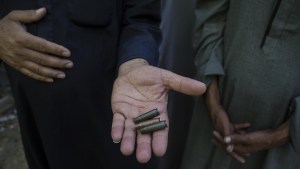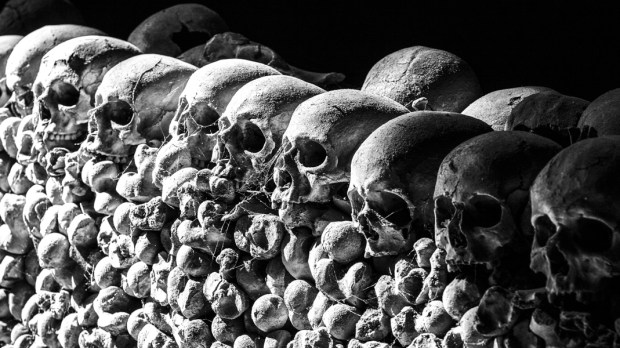The annual feast of the First Martyrs of the Church of Rome calls to mind the countless Christians martyred during the persecution of Nero in the year 64. It was indeed a savage persecution, but in fact does not compare to the full-scale massacres that have occurred during the past century.
Saint John Paul II, in preparing for the Great Jubilee year of 2000, created a Commission for the New Martyrs of the Great Jubilee. This particular commission researched and cataloged all those who died for the faith in the 20th century. They discovered that the “20th century has produced double the number of Christian martyrs [than] all the previous 19 centuries put together.”
It is a staggering discovery considering how much we revere the early Christian martyrs and how fiercely they were persecuted.
As we know, now in the 21st century martyrdom still confronts many of our Christian brothers and sisters. The charity group Aid to the Church in Need carefully follows the situation of anti-Christian persecution around the world. Their global analysis shows that Christians are the world’s most persecuted faith group.
Pope Francis echoed this assessment during a homily in 2014:
There are many martyrs today, in the Church, many persecuted Christians. Think of the Middle East where Christians must flee persecution, where Christians are killed. Even those Christians who are forced away in an ‘elegant’ way, with ‘white gloves’: that too is persecution. There are more witnesses, more martyrs in the Church today than there were in the first centuries. So during this Mass, remembering our glorious ancestors, let us think also to our brothers who are persecuted, who suffer and who, with their blood are nurturing the seed of so many little Churches that are born. Let us pray for them and for us.
This fact should not be forgotten or glossed over. John Paul II wrote in his Apostolic Letter Tertio Millennio Adveniente, “In our own century the martyrs have returned, many of them nameless, ‘unknown soldiers’ as it were of God’s great cause. As far as possible, their witness should not be lost to the Church.”
John Paul II urged the local Churches to “do everything possible to ensure that the memory of those who have suffered martyrdom should be safeguarded, gathering the necessary documentation [for the purpose of canonizations]… These [canonizations] show the vitality of the local Churches, which are much more numerous today than in the first centuries and in the first millennium.”
The early Church had a similar idea and gathered the countless names of Christians who were martyred in the first centuries of the Church and assigned feast days for them in the liturgy. For many years it seemed like every day in the Church’s calendar was devoted to a different martyr. This is why the Church developed the solitary feast of the First Martyrs of the Church of Rome. It provided an opportunity to collect all of these saints (both known and unknown) and honor them on a single day, recognizing their supreme sacrifice in a more unified way.
In the end, these holy men and women who gave up their lives for the faith are worthy models for us, especially those who recently made the supreme sacrifice of their life. Against all odds they stood fast in their faith and were ready to die rather than renounce their faith in Jesus Christ. It is not something only found in the history books, but is happening now and could happen to us at any time.

Read more:
The Coptic martyrs of Minya: poignant accounts of their final moments
As we remember the First Martyrs of the Church of Rome, let us remember our own modern-day martyrs and ask for their intercession as we strive to live up to our baptismal calling to be a shining light in the darkness.

